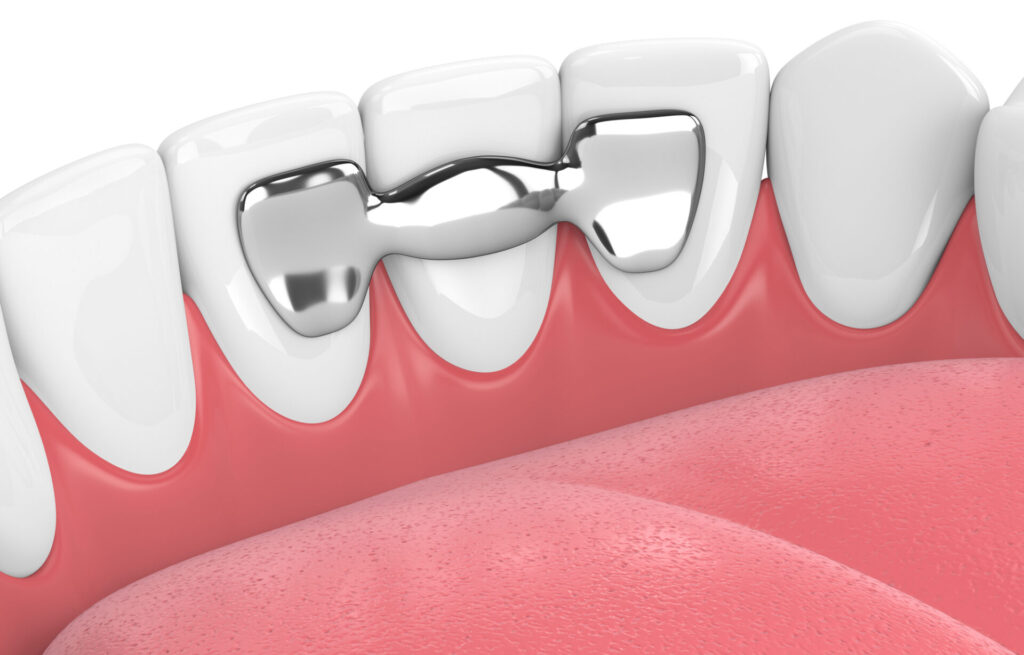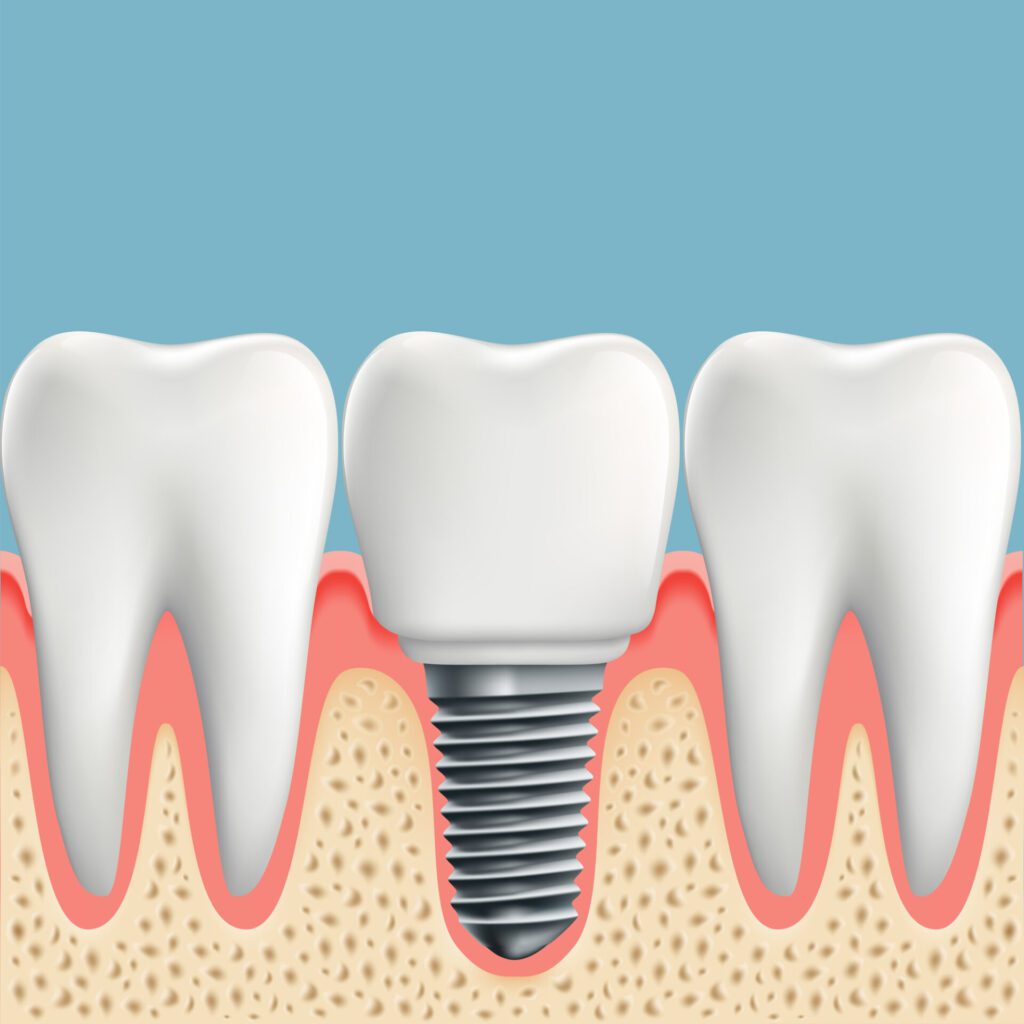Lost a tooth? Before you ‘fill the gap,’ here’s what to know
July 27, 2023
This paid piece is sponsored by Siouxland Oral & Maxillofacial Surgery.
If you are missing a tooth and want to “fill in that gap” to make things more esthetic or more functional, there are a couple of things to consider. This thought process can occur when you are making decisions at the time you lose your tooth and want a replacement or when you have already lost your tooth a few years ago and now want a replacement.
In the first instance, when you are losing a tooth and want a replacement immediately or very soon, you have a couple of options. Permanent options include a traditional “bridge” that requires removal of tooth structure from adjacent teeth to anchor the prosthetic tooth, a Maryland bridge that glues the tooth replacement to the teeth on either side or a dental implant.
In the second instance, you can choose to do nothing and have the space where your tooth used to be or have a removable prosthetic such as a partial denture, a “flipper” or an Essix retainer. These all have a tooth replacement but are removable.
Both options have pluses and minuses. But for today’s discussion, we will focus on dental implants. For many patients who are undergoing a tooth extraction, there is the option of immediately placing a dental implant at the time of extraction. There is usually the requirement of bone grafting along with the placement of the dental implant. The documented failure rates for “immediates” are a bit higher versus extracting the tooth, waiting a period of six to nine months and then placing the dental implant. The key determinant of when to place the implant is evidence on X-ray that the hard outer shell of bone, called the cortical bone, has re-formed.
One thing to understand is that dental implants are round in cross section, and tooth extraction sockets are oblong in cross section. So when you place a dental implant in a fresh extraction socket, there always will be a gap between the round circular implant and the oblong extraction site. This gap must be filled in with a bone grafting material to act as a road map for the body to begin the process of making your own bone in that area. This newly formed bone eventually will meet with the dental implant and bond to it.
The major determinant of success for immediate dental implant placement is the preservation of the bone all the way around the implant. Typically, it is the bone closest to the lips — the buccal bone — that is most at risk for fracture during tooth extraction, and this is the bone that we wish to preserve. One technique to preserve the buccal bone is the “shell or shield technique” where you intentionally leave a small shell of tooth structure attached to the buccal bone, along with bone grafting with particulate bone to preserve the area.
Another more successful technique is to remove the tooth, place the implant and use bone grafting to fill in the gap between the dental implant and the buccal bone.
A third technique is to remove the tooth, bone graft, wait six to nine months for the bone to heal and place the dental implant later. This time gap may seem like a long time to wait, but you must allot a period for the bone to heal. On the X-rays, you actually will see that hard outer shell of bone form in six to nine months. That hard outer surface is called the cortex. Once the cortex has formed, healing is complete.
Bone grafting at the time of extraction when no implant is placed immediately is known as a ridge preservation graft. The intent of the graft is to preserve the volume of bone in that area for future implant placement in six to nine months. Over time, bone that is not stimulated by tension forces atrophies. Your teeth are held in the bone by a ligament — like small elastic rubber bands — so as forces are applied to the tooth, the tooth pulls on the ligament, and the ligament pulls on the bone. This stimulates bone metabolism. Without this pulling effect, the bone atrophies. One way to compensate for this process is the ridge preservation graft. If, however, you opt for this graft and wait a few years for implant placement, then even the ridge preservation graft atrophies. So if you get this graft, it is important to place the implant between six to 12 months later.
In some cases, the ridge preservation graft is unnecessary, such as the case in the maxillae where the maxillary sinus comes down and thins out the bone so much that you must complete a bone graft into the sinus to place a dental implant. In this example, the body will fill in the extraction site with bone by itself. Later, you can do the sinus lift bone graft and most often even place the implant at the same time. The reason that ridge preservation grafting may be unnecessary in this case is because the ridge preservation graft is designed to preserve bone to the buccal cortex and preserve bone vertically.
The implant must be placed 2 to 3mm below where the teeth attach to the bone, and in six to nine months, bone atrophy will not occur that rapidly in most people to erode the bone in a vertical dimension. If the tooth extraction is completed properly, you will not need a bone graft to stabilize the bone in a horizontal dimension in most cases.
The point here is that ridge preservation grafts in the posterior maxilla in some cases are unnecessary in preparation for dental implants. So if your provider says you need one, ask them to explain the reasons why.
To recap, make sure you preserve the buccal bone, bone graft the gap, and you may or may not need the ridge preservation graft if you are delaying placement of the dental implant.
These are advanced techniques not taught to competence in dental school. And it usually takes quite a few surgeries under supervision to learn how to get it right. If your provider wants to provide these services to you, ask them how many of these they completed under direct supervision from their professors in school or residency. The answer should give you confidence that your provider can manage the surgery, has alternative procedures to rely on to complete the case and can manage any looming complications.
Before dental implant, other procedures might be needed to prep for success











